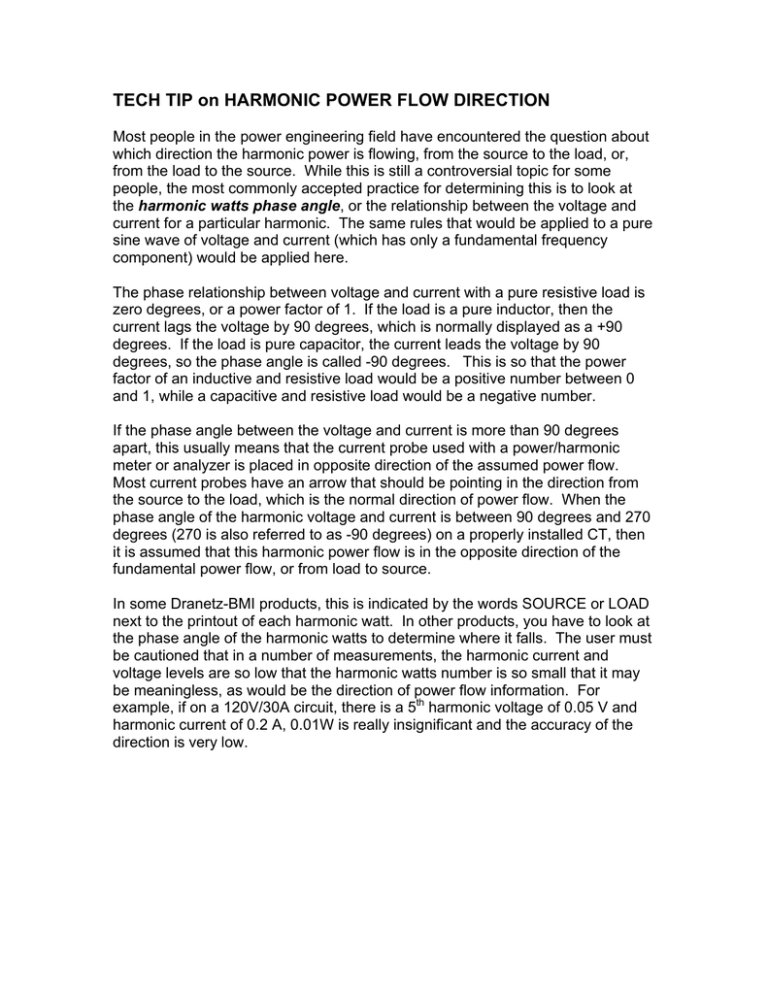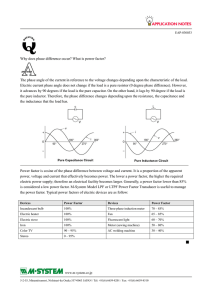Tech Tip on Harmonic Power Flow Direction
advertisement

TECH TIP on HARMONIC POWER FLOW DIRECTION Most people in the power engineering field have encountered the question about which direction the harmonic power is flowing, from the source to the load, or, from the load to the source. While this is still a controversial topic for some people, the most commonly accepted practice for determining this is to look at the harmonic watts phase angle, or the relationship between the voltage and current for a particular harmonic. The same rules that would be applied to a pure sine wave of voltage and current (which has only a fundamental frequency component) would be applied here. The phase relationship between voltage and current with a pure resistive load is zero degrees, or a power factor of 1. If the load is a pure inductor, then the current lags the voltage by 90 degrees, which is normally displayed as a +90 degrees. If the load is pure capacitor, the current leads the voltage by 90 degrees, so the phase angle is called -90 degrees. This is so that the power factor of an inductive and resistive load would be a positive number between 0 and 1, while a capacitive and resistive load would be a negative number. If the phase angle between the voltage and current is more than 90 degrees apart, this usually means that the current probe used with a power/harmonic meter or analyzer is placed in opposite direction of the assumed power flow. Most current probes have an arrow that should be pointing in the direction from the source to the load, which is the normal direction of power flow. When the phase angle of the harmonic voltage and current is between 90 degrees and 270 degrees (270 is also referred to as -90 degrees) on a properly installed CT, then it is assumed that this harmonic power flow is in the opposite direction of the fundamental power flow, or from load to source. In some Dranetz-BMI products, this is indicated by the words SOURCE or LOAD next to the printout of each harmonic watt. In other products, you have to look at the phase angle of the harmonic watts to determine where it falls. The user must be cautioned that in a number of measurements, the harmonic current and voltage levels are so low that the harmonic watts number is so small that it may be meaningless, as would be the direction of power flow information. For example, if on a 120V/30A circuit, there is a 5th harmonic voltage of 0.05 V and harmonic current of 0.2 A, 0.01W is really insignificant and the accuracy of the direction is very low.



